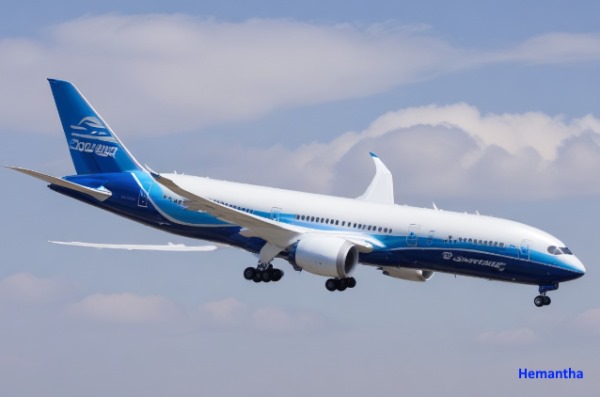Boeing: flying through clouds vs manoeuvring bad press – By Hemantha Yapa Abeywardena


Boeing, the aerospace giant that enjoyed a market dominance heyday for decades from the 50s to 90s and marketing heyday in 2000s, has been grabbing the headlines for all the reasons recently.
The catalogue of disasters involving the company reached one of its peaks last week, when the CEO of the company, Dave Calhoun, was mercilessly grilled by a panel of US senators on Capitol Hill last week.
Mr Calhoun neither showed any blueprint for addressing the burning issues nor came any closer to providing the senators with – and the public for that matter – any consistent, straight-forward answers to the questions that he was subjected to; low-pitched mumbling hardly helped in a tense situation, when you are at the receiving end of a barrage of probing questions.
Of course, Mr Calhoun is on his way out and Boeing is still struggling to find his replacement. At present, two US astronauts are stranded on the ISS, International Space Station, being unable to make their way back on the same space shuttle that took them there – Boeing Starliner– does not make the very process of attracting new talent any easier.
The current, lamentable status of the company that revolutionized air travel with the iconic planes, like the 707, 727, 737, and 747, left both the aviation enthusiasts and of course, the investors in the lurch; they do hope Boeing will be turned around by a like of Steve Jobs, who elevated Apple to astronomical heights in a matter of few years since his return to the very company that he cofounded from what he thought, the wilderness.
Thanks to the boom in aviation in the early 2000s, buoyed by the equally booming global economy, not only did Boeing enjoy the heyday in financial performance, but also made enormous profits from the sale of commercial airlines as never before in its less-turbulent history.
Boeing recent troubles started with the 737 Max aircraft grounding across the world for two years: in 2018 and 2019, there were two fatal crashes about which an investigation was launched. It laid bare the issues with design and approval processes; in light of the initial revelations, more investigations are ongoing, including one with the involvement of the FAA, Federal Aviation Administration and criminal charges against those who were responsible are in the offing.
In addition, there have been quality control problems in the production of other models too, including the 787 Dreamliner. It was the whistleblowers, from Boeing and its suppliers, who lifted the lid of a potential cesspit, while risking the loss of employment, emotional blackmail, prospect of being ostracized and even physical harm; two of the whistleblowers have already died – one of them committed suicide and the other died due to a fast-paced infection.
Moreover, as far as the endangered species are concerned, navigating the complex legal system that potentially protects the whistleblowers is much harder than Dreamliner crisscrossing the crowded America skies.
Through the ashes of what is left of Boeing reputation, meanwhile, Europe’s Airbus industry appears to be ascending like the proverbial phoenix. The market share of the Airbus industry at present stands at 60%, compared with the corresponding 40% for Boeing, thanks to the surging order for new Airbus models from various airlines. Boeing is still a major player, when it comes to commercial airplanes, though.
As for Airbus industry, scaling up production in proportion to the demand remains a challenge; the relatively weaker, post-Covid market is a hindrance too, when it comes to broadening its horizons. Airbus, however, is winning the PR battle as it recites, ‘Passenger safety first’ like a mantra, knowing very well that its rival across the Atlantic cannot mimic the former at the same frequency in its current circumstances, having come under scrutiny on many fronts.
Against this backdrop, Boeing is facing yet another daunting task: Its Starliner space shuttle, after facing a series of delays due to technical problems, with the collaboration with NASA, took two US astronauts on board to the ISS, International Space Station on June 5, 2024; they were at the controls until the flight docked with the ISS, after a few attempts.
They were supposed to make the return journey on 13 June, but have been compelled to extend their stay under zero gravity for an indefinite period of time due to helium leaks, a propeller thrust problem and a problem with a valve.
Their unexpectedly long stay on board the ISS, however, does not appear to be a cause for immediate concern as the latter has enough supplies for weeks. NASA assumes that the return journey is only possible after 5 July, 2024, with a delay in three weeks.
Against this backdrop, the future CEO Of Boeing is facing a monumental challenge to get the company back on track and deal with the current public perception that has left much to be desired.
Since cost-cutting and paramount public safety are the two sides of the same coin, how the would-be CEO is going to strike a balance remains to be seen.








